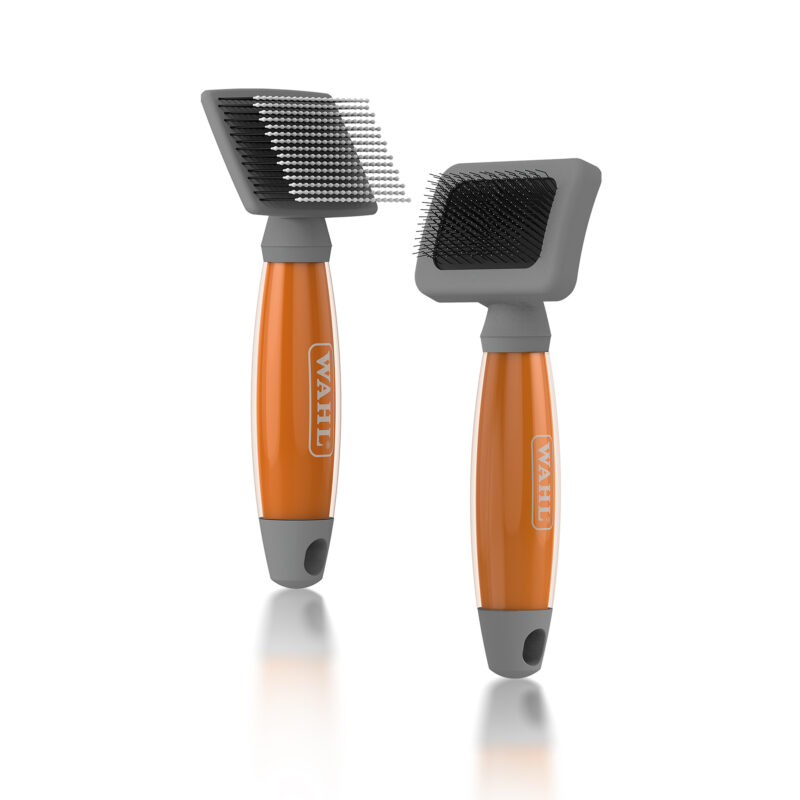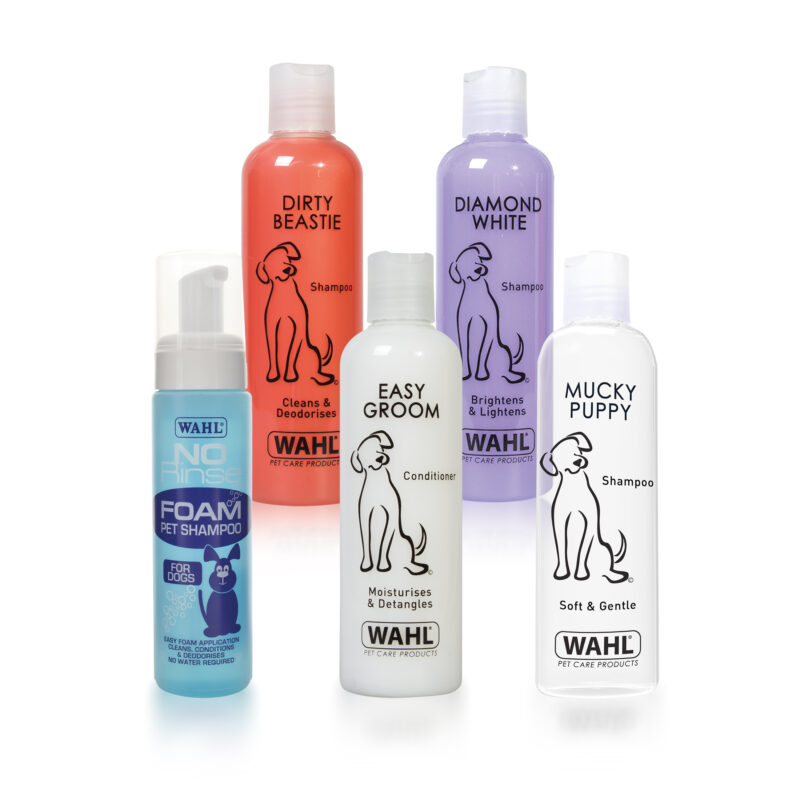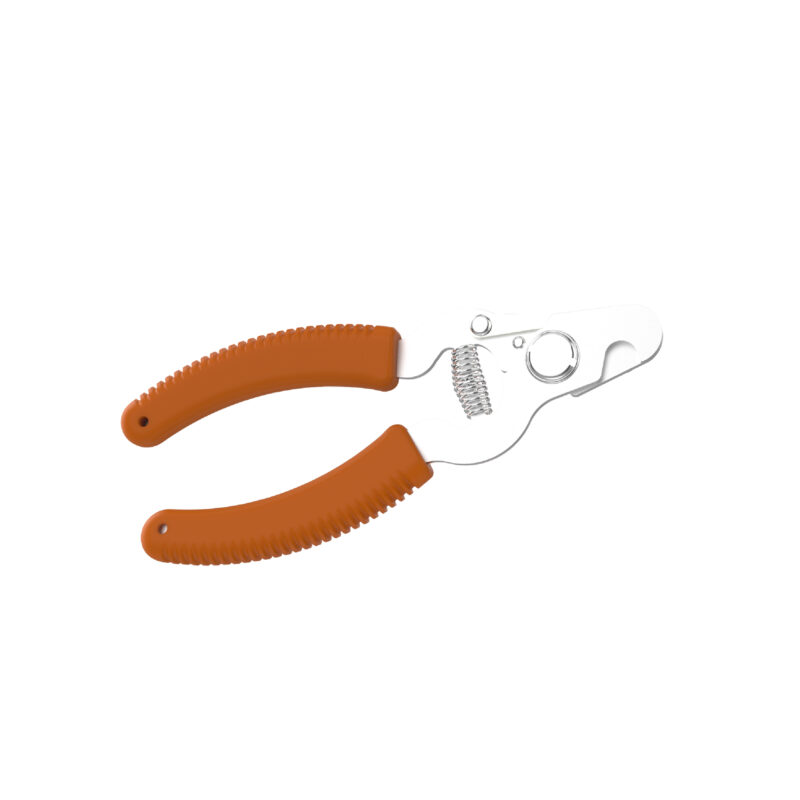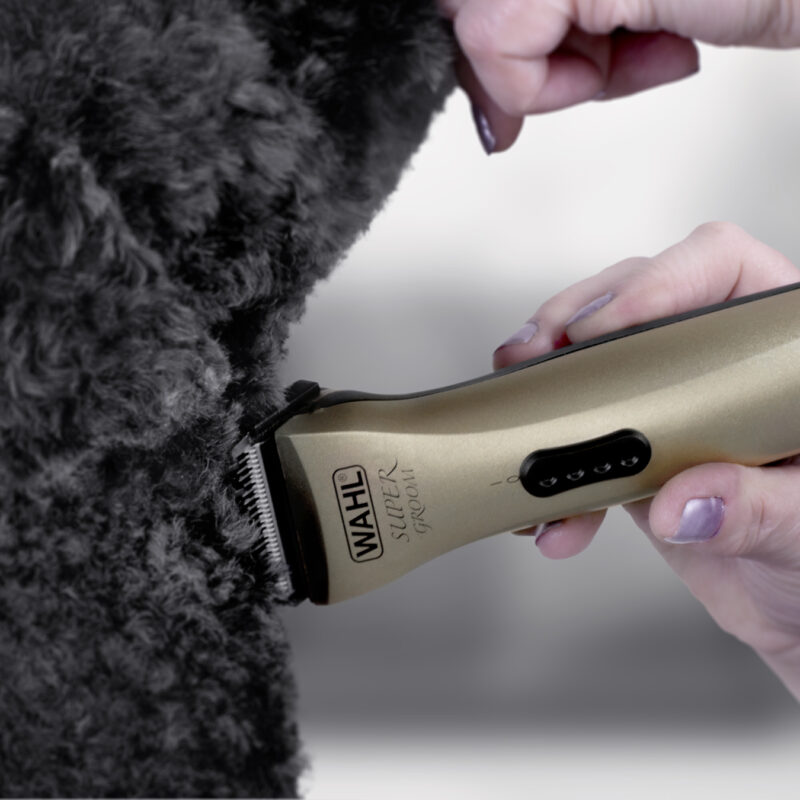Home / Product Guides /
DOG GROOMING GUIDE: SILKY COATS
Grooming guide for silky coats
Example breeds: Cocker Spaniel, Silky Terrior, Yorkshire Terrior, Afghan Hound, Setter
Brushing
Overview
Your dog will benefit from brushing as it will help regulate body temperature and reduce itching as you remove dead hair and distribute natural oils. Regular brushing will help you bond with your pet as well as getting to know their skin better, which means you’ll find any parasites and skin conditions sooner rather than later.
Tips:
- You can work from the tail to head or the head to tail, as long as you ensure you brush all the hair, not just the top coat.
- One popular technique is to brush backward against the lay of the fur, then brush it back into place. This loosens and removes dead hair and stimulates the skin.
- Take care when brushing over joints or sensitive areas and reduce any downward pressure.
- When brushing areas without much coat use a soft brush to avoid injury.
Why Brush Silky Coats?
Silky coats often have straight or slightly wavy hair that is very fine and soft. You’ll find that silky coats shed twice a year so during these times brushing daily is recommended. To keep a silky coat in the best condition, regular brushing is a must to remove dead hair and any tangles.
Recommended For Silky Coats:
- Using a Pin Brush, groom the coat through, starting at the top and working down. If the dog is shedding coat, a Slicker Brush will assist in removing any dead hair. Brush the hair through in the direction of the natural growth.
- Move through the entire coat using this technique and ensure the tummy area and between the legs is not missed. These areas are prone to tangles which if left unresolved, will become difficult to remove.
- Once brushed through with the slicker or pin brush, use a Grooming Comb to comb the coat and remove any remaining loose hair. This will also identify remaining knots or mats in the coat.
- It is essential to remove these knots on a regular basis to reduce the chances of large mats forming and causing increased problems.
- If you encounter knots that will not brush out without causing discomfort to the dog, it may be necessary to comb the coat through with a Dematter Comb.
- Finally use a Bristle Brush to go over the coat and lay it flat in the direction of growth. This will encourage the natural oils in the coat and improve the overall condition.

Bathing
Overview
Determine whether your dog does need a bath, this often depends on the lifestyle of the dog. The most common reasons for bathing include removing dirt and mud from the coat or improving the smell of the dog. However, be aware that no dog should be bathed too frequently as this will remove the natural oils, making the coat dry and sometimes leading to irritation. For most dogs, regular brushing will keep the coat and skin in good condition and eliminate the need for frequent baths.
Tips:
- If your dog does need a bath, ensure you brush first to remove dead hair.
- Wet your dog, wash with dog shampoo, being careful to avoid eyes, ears, nose and mouth.
- Use a washcloth on face and around eyes.
- Rinse well.
Recommended for Silky Coats:
- Use a Shampoo that’s right for the colour and skin type of your dog.
- Some benefit can be gained from regular use of a Detangling Spray.

Nail Care
Overview
Regardless of breed, all dogs have claws which grow constantly and may, at times need some attention to prevent discomfort or injury. If your dog has an active lifestyle their claws will usually naturally wear down as he walks on hard surfaces. Problem claws therefore tend to be an issue more in older dogs that exercise less, or dogs which spend more time on soft surfaces.
It is possible to clip your dog’s nails at home. If you are unsure or need help it is worth speaking with your local veterinary nurse or groomer, who will be able to offer simple advice and guidance.

Clipping & Trimming
Overview
There are very few dogs that will not benefit from a little trimming at some time in their lives. However, trimmers are limited in their capability and should not be confused with a clipper. For dogs that regularly attend a dog groomer, there may be opportunities for interim trimming to maintain areas such as face, chin, ears and feet between regular grooming parlour visits. Trimmers can also be useful when removing small mats from the coat.
Recommended for Silky Coats:
- To keep them looking tidy, a little trim around the paws and face is best using a lightweight trimmer such as the Super Trim.
- A full groom, including clipping is usually needed every 6-8 weeks. The Super Groom cordless clipper has a blade designed to be used on silky coats.
Full video guides on how to clip & trim your dog at home can be found here.
